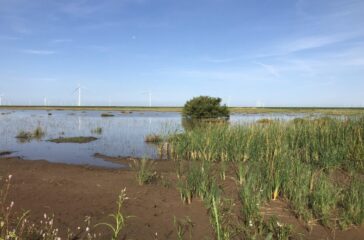Pesticides from cattle feedlots may threaten Texas wetlands
Across northwest Texas, from the panhandle south past Midland, nearly 20,000 shallow, watery basins dot the landscape. Locals call them mud holes, buffalo wallows, or lagoons, but they are technically known as playas. As oases in the landscape, these wetland areas act as recharge points for the Ogallala Aquifer and play a critical role in sustaining life in northwest Texas.
 EWG
EWG